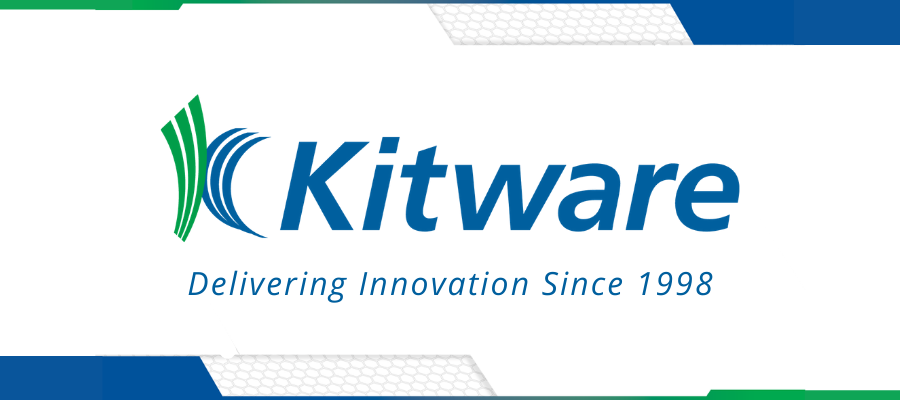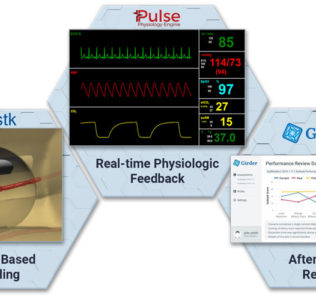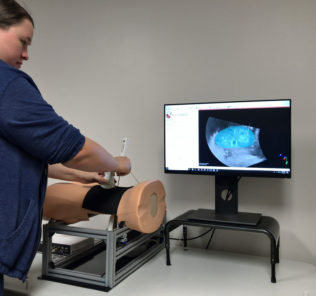Kitware, Cleveland Clinic Develop Virtual Anatomy Suite
Technology company Kitware recently announced a collaboration with Cleveland Clinic’s Lerner Research Institute to develop Annotation and Exchange of Virtual Anatomy (aeva). This is a free and open source application suite for the annotation and exchange of virtual anatomy. The new aeva software suite will facilitate in silico description, visualization, and exchange of anatomy between clinicians, scientists, engineers, and the general public.
This aeva solution is important to the field of healthcare simulation because representing anatomy in a virtual form is essential for clinical decision making, biomedical research, and medical training. Working with virtual anatomy is not limited to geometry processing but also requires appropriate and efficient annotation of organs and tissues. Labeling regions to define spatial relationships and interactions between anatomical objects is also critical.
Though there is a myriad of proprietary, free and open source software already in existence, Cleveland Clinic researchers had to rely on multiple software tools to meet their needs. Additionally, working with virtual anatomy requires appropriate and efficient annotation of organs and tissues, as well as labeling of regions to define spatial relationships and interactions between anatomical objects. Aeva, which will be available on various computing platforms (including Microsoft Windows, Mac, and Linux), was developed with these issues in mind so that the application would be an effective solution for those working with virtual anatomy.
Sponsored Content:
“Until now, a unified platform that provides a streamlined interface for generation, modification, annotation, and exchange of anatomy has not existed,” said Ahmet Erdemir, Ph.D., associate staff and investigator at Lerner Cleveland Clinic’s Lerner Research Institute and overall principal investigator of the aeva project. “This new application suite, developed through Cleveland Clinic and Kitware’s research collaboration, aims to fill this gap by providing a unified platform and functionalities to support diverse data formats and standards.”
The aeva application suite contains two applications: aevaSlicer and aevaCMB. These two applications jointly provide functionalities that are amenable for the preparation and utilization of anatomy for various workflows (e.g. atlases, machine learning, simulations, etc). These workflows commonly leverage heterogeneous representations of anatomy and require comprehensive descriptions of anatomical relations as frequently seen in physics-based simulations.
aevaSlicer is designed to provide comprehensive image segmentation, robust surface geometry generation, and a multitude of volumetric meshing capabilities. The application is built on top of 3D Slicer—an open source software platform specifically built for medical image informatics, image processing, and three-dimensional visualization. In aevaSlicer, the interface is customized to streamline the workflow to go from an image to a volume mesh of an organ or a tissue. New features have been added to enhance surface generation capabilities and to introduce volumetric meshing of anatomy.
aevaCMB provides resources and templates to assign ontology terms (anatomical or otherwise) to organs and tissues and for appropriate and efficient labeling of regions (i.e. for defining spatial relationships and interactions between anatomical objects), and to generate mesh files that can be loaded to simulation software aevaCMB is a customized version of CMB—an open source platform for simulation workflows that combines geometric processing with attribute definition, input, and validation to create consistent, high-level descriptions of data appropriate for simulations and other processing.
Sponsored Content:
In aevaCMB, the interface is customized for anatomical annotation and representation of mesh data in various formats. New features have been added to support operations for importing and exporting anatomical representations and annotation (template-based and freeform, including a powerful set of region selection tools).
“We relied on Kitware’s experience building high-quality open source software to develop aeva,” said Andinet Enquobahrie, Ph.D., co-principal investigator on this project, and director of Kitware’s Medical Computing Team. “The improved workflows made available in aeva will allow clinicians and scientists to conduct their studies more efficiently.”
Acknowledgment: Research reported in this publication was supported by the National Institute of Biomedical Imaging and Bioengineering of the National Institutes of Health under Award Number R01EB025212. The content is solely the responsibility of the authors and does not necessarily represent the official views of the National Institutes of Health.
About Kitware Inc.
Headquartered in Clifton Park, New York, Kitware Inc. has focused on advancing the frontiers of understanding by developing innovative open source software platforms and integrating them into research, processes, and products since its founding in 1998. With a wide range of capabilities, Kitware powers computer vision, data and analytics, scientific computing, medical computing, and software process implementation/management. Kitware provides expertise in these areas through customization services, support, collaborative research and development, training, and books. For additional information on Kitware, please visit kitware.com.
About Cleveland Clinic
Cleveland Clinic is a nonprofit multispecialty academic medical center that integrates clinical and hospital care with research and education. Located in Cleveland, Ohio, it was founded in 1921 by four renowned physicians with a vision of providing outstanding patient care based upon the principles of cooperation, compassion and innovation. Cleveland Clinic has pioneered many medical breakthroughs, including coronary artery bypass surgery and the first face transplant in the United States. U.S. News & World Report consistently names Cleveland Clinic as one of the nation’s best hospitals in its annual “America’s Best Hospitals” survey. Among Cleveland Clinic’s 67,554 employees worldwide are more than 4,520 salaried physicians and researchers, and 17,000 registered nurses and advanced practice providers, representing 140 medical specialties and subspecialties.
Cleveland Clinic is a 6,026-bed health system that includes a 165-acre main campus near downtown Cleveland, 18 hospitals, more than 220 outpatient facilities, and locations in southeast Florida; Las Vegas, Nevada; Toronto, Canada; Abu Dhabi, UAE; and London, England. In 2019, there were 9.8 million total outpatient visits, 309,000 hospital admissions and observations, and 255,000 surgical cases throughout Cleveland Clinic’s health system. Patients came for treatment from every state and 185 countries.
Learn More About Aeva
Today’s article was guest authored by Andinet Enquobahrie, Ph.D., Director of Medical Computing at Kitware, Inc..
Have a story to share with the global healthcare simulation community? Submit your simulation news and resources here!
Sponsored Content:



















